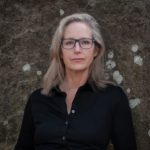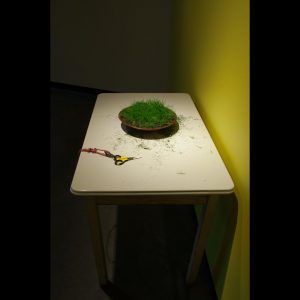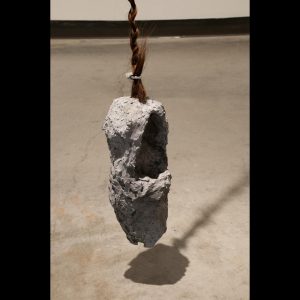Upcoming grant deadlines: Applications for 2024 Delaware Writers Retreat and 2025 Individual Artist Fellowships due August 1. More Info

She always has been a maker. During her middle school years, Jennifer Borders would hole herself up in her room, which every couple of weeks she would rearrange and redecorate. She was into sewing, often making her own clothes. She would craft handmade gifts for various occasions. Her parents encouraged her, buying her kits of colored pencils.
When she was 7, she made her father a paper tie and hid it in the yard, where he hunted for it like an Easter egg. (She was disappointed when he didn’t later include the paper tie in his wardrobe.)

In high school, Borders worked at ceramics. But not until her early 20s did she start approaching her maker tendencies with the seriousness of an artist.
“I want to have an intercommunication with people,” she says, now an installation artist. “It’s not just me doing stuff and putting it out there; it’s also about the viewer, and what they bring. And I do that, I think, somewhat through trying to engage people in moving around the space, and perhaps interaction with some element.”
Her latest installation, “Up and Down,” includes a grass station that invites the visitor to clip blades of grass.
“Even though it’s in a gallery environment,” says Borders, of Arden, “there’s this sense of smell that comes up, perhaps. So I’m trying to evoke things more than being didactic about what the meaning is. Certainly, I’m getting at certain thoughts and feelings that arise, but I’m not trying to dictate what’s going on.”
Hovering over her work, she says, are personal difficulties from earlier in her life — traumatic deaths of family, disease, and dissolution of relationships.
“There’s an overarching theme of vulnerability in my life — and people’s bodies, and our environment, mortality — so there’s that,” she says. “And also a sense of the fragility of life, of the preciousness of that.”
Nonetheless, she considers herself “extremely lucky in life, love and creating a new family.”
“I am joyful and grateful,” Borders says, “and that also compels my work.”

Having grown up in New Mexico, she finds meaning in the desert, and in nature at large.
“There’s a wonderful harshness in the [desert] landscape that I’m very attracted to,” she says. “I’ve been inspired by the starkness.”
In “Up and Down,” which Borders calls “a paean to life’s pains and joys,” she employed some ordinary materials of domestic life — cooking pots, bowls and containers; a kitchen table; living, growing lawn grass; fabrics and braiding. A Walt Whitman poem, “Life and Death,” is drawn from a manuscript in his own hand, with its original cross-outs. “The Other Shoe” (2014) comprises a plaster-coated shoe “hung in suspense of waiting for the next bad thing to happen,” she says. It is suspended by a braided hair-and-steel cable, reflective of the long braid in which her mother wore during the last years of her life.
Teaching art and raising two boys, Borders says, “were my deeply creative acts for many years.” Her resume, she notes, has a hole that exactly corresponds to her child-rearing years, bracketed by a fellowship from the Pennsylvania Council on the Arts and by this one from the Division.

“The process of raising a child is so complicated and deeply creative because you are constantly having to respond to them,” she says. “They are in the process of teaching you, mostly — what you need to know about them. That is really difficult, to keep an open mind and be a guide at the same time.”
She could just as well be describing her installation-based mode of working. And, since her work mostly is site-specific, she has been plotting and planning a project for November that directly responds to the Mezzanine Gallery.
Masters
Established
Emerging
Related Topics: arts fellowship, arts grants, dance, Delaware, delaware division of the arts, emerging artist, fiction, folk arts, literary arts, literature, media arts, music, performing arts, poetry, visual arts